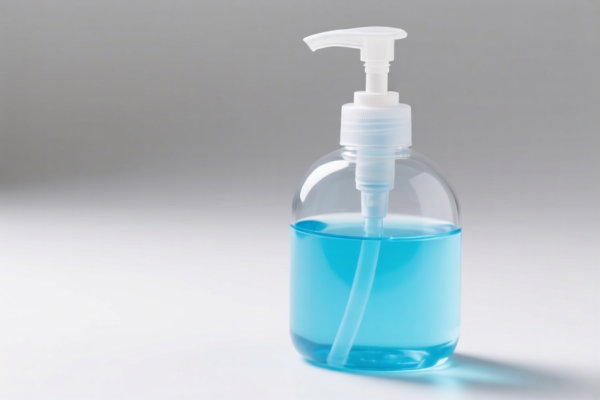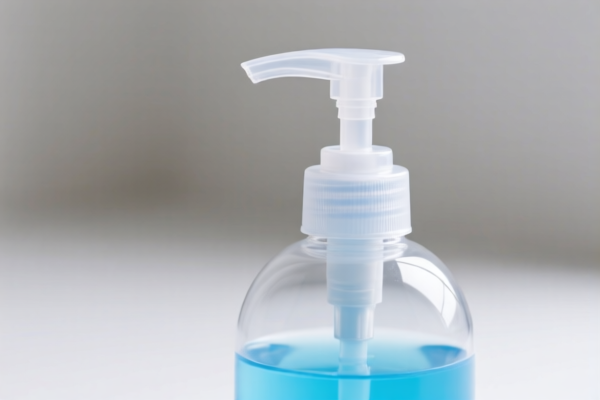| HS Code | Official Doc | Tariff Rate | Origin | Destination | Effective Date |
|---|---|---|---|---|---|
| 8424899000 | Doc | 56.8% | CN | US | 2025-05-12 |
| 8424820090 | Doc | 57.4% | CN | US | 2025-05-12 |
| 8487900080 | Doc | 83.9% | CN | US | 2025-05-12 |
| 8487900040 | Doc | 58.9% | CN | US | 2025-05-12 |
| 9616100000 | Doc | 37.5% | CN | US | 2025-05-12 |
| 9616200000 | Doc | 34.3% | CN | US | 2025-05-12 |
| 8511806000 | Doc | 57.5% | CN | US | 2025-05-12 |
| 8511906040 | Doc | 57.5% | CN | US | 2025-05-12 |
| 8473305100 | Doc | 70.0% | CN | US | 2025-05-12 |
| 8473408600 | Doc | 55.0% | CN | US | 2025-05-12 |




Automatic Hand Soap Dispenser
An automatic hand soap dispenser is a device that dispenses liquid soap, foam soap, or gel soap without physical contact. It utilizes a sensor, typically infrared, to detect the presence of a hand and automatically pump the soap.
Material:
- Housing: Commonly constructed from ABS plastic, stainless steel, or polypropylene. Stainless steel models offer greater durability and a more premium aesthetic.
- Pump Mechanism: Typically utilizes a miniature electric pump powered by batteries (often AA or AAA) or, in some models, a rechargeable battery. The pump components are often made of plastic and rubber.
- Sensor: Infrared sensors utilize plastic lenses and electronic components to detect motion.
- Reservoir: Usually made of plastic (PET or HDPE) to hold the soap solution.
Purpose:
The primary purpose is to provide a hygienic and convenient method of handwashing. By eliminating the need to touch a soap dispenser, the risk of germ transmission is reduced.
Function:
The device operates through the following steps:
- Sensor Activation: When a hand is placed within the sensor’s range, the infrared sensor detects the presence of an object.
- Pump Activation: The sensor signals the electric pump to activate.
- Soap Dispensing: The pump draws soap from the reservoir and dispenses it through the nozzle.
- Automatic Shut-off: The pump stops dispensing soap when the hand is removed from the sensor’s range.
Usage Scenarios:
- Residential: Kitchens, bathrooms, and laundry rooms.
- Commercial: Public restrooms, hospitals, schools, offices, restaurants, and food processing facilities.
- Healthcare: Operating rooms, patient care areas, and laboratories where maintaining a sterile environment is crucial.
Common Types:
- Infrared Sensor Dispensers: The most common type, utilizing infrared technology for detection. Vary in soap volume dispensed and aesthetic design.
- Touchless Wall-Mounted Dispensers: Designed for high-traffic areas, these are permanently affixed to a wall and often feature larger reservoirs.
- Foam Dispensers: Dispense pre-diluted soap solutions as foam, reducing soap consumption and providing a softer handwashing experience.
- Liquid Dispensers: Dispense traditional liquid soap.
- Rechargeable Dispensers: Utilize rechargeable batteries, reducing the need for frequent battery replacements.
- Refillable Dispensers: Designed to be refilled with bulk soap solutions, minimizing plastic waste.
- Adjustable Volume Dispensers: Allow users to control the amount of soap dispensed per use.
Automatic hand soap dispensers fall under several potential classifications based on their mechanical function and components. Here's a breakdown of relevant HS codes based on the provided reference material:
- 8424899000: This code covers “Mechanical appliances (whether or not hand operated) for projecting, dispersing or spraying liquids or powders; fire extinguishers, whether or not charged; spray guns and similar appliances; steam or sand blasting machines and similar jet projecting machines; parts thereof: Other appliances: Other”. Since an automatic soap dispenser projects liquids, this is a potential match. The total tax rate is 56.8% (Basic tariff: 1.8%, Additional tariff: 25.0%, Post-April 2, 2025, additional tariff: 30.0%).
- 8473305100: This code applies to “Parts and accessories (other than covers, carrying cases and the like) suitable for use solely or principally with machines of headings 8470 to 8472: Parts and accessories of the machines of heading 8471: Not incorporating a cathode ray tube: Other”. If the dispenser is considered a component of a larger automated system (e.g., a washroom automation system), its parts might fall under this code. The total tax rate is 70.0% (Additional tariff: 25.0%, Post-April 2, 2025, additional tariff: 20.0%, steel and aluminum products additional tariff: 25%).
- 8511806000: This code covers “Electrical ignition or starting equipment of a kind used for spark-ignition or compression-ignition internal combustion engines (for example, ignition magnetos, magneto-dynamos, ignition coils, spark plugs and glow plugs, starter motors); generators (for example, dynamos, alternators) and cut-outs of a kind used in conjunction with such engines; parts thereof: Other equipment: Other”. If the dispenser utilizes electrical components for operation, this code could be relevant. The total tax rate is 57.5% (Basic tariff: 2.5%, Additional tariff: 25.0%, Post-April 2, 2025, additional tariff: 30.0%).
Regarding HS code 8473305100, please note the need to verify whether the product is made of steel or aluminum, as an additional tariff of 25% applies to those materials.
Customer Reviews
No reviews yet.